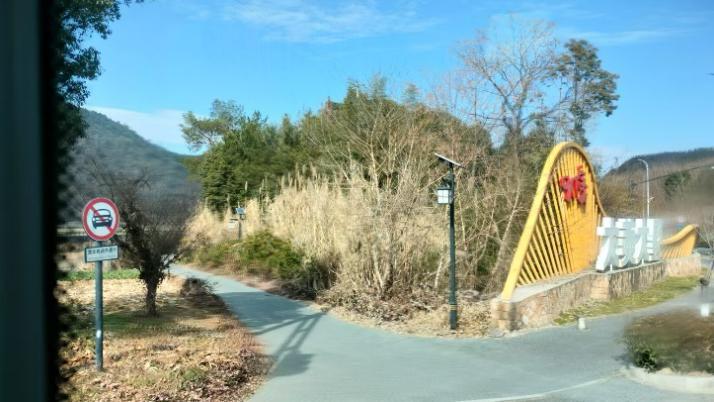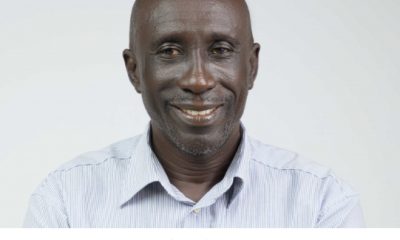News
A Journey to Xiajiang Village: A Model for Rural Revitalization in China

A Journey to Xiajiang Village: A Model for Rural Revitalization in China
BY AUGUSTINE WEREUCHE PRAISE
(Nigeria), Zhejiang University of Science and Technology, Hangzhou, China
In the heart of China lies Xia jiang Village, a once remote and economically disadvantaged area now undergoing significant transformation. As a student of Communication Engineering here in China, I had the privilege of visiting this village as part of a school trip to explore the ongoing modernization efforts, the development of local infrastructure, and how the village is transitioning from poverty to prosperity.
From Rural Hardship to Economic Growth
Xiajiang Village, located in the outskirts of Hangzhou, was once a representation of rural poverty and isolation. For many years, the villagers struggled with limited access to basic necessities, education, and healthcare. Much like other remote areas in China, Xiajiang faced challenges in transportation, employment opportunities, and quality of life. The government of China, in its bid to address these inequalities, introduced policies aimed at eradicating poverty and improving living standards in rural areas. In 2015, Xiajiang Village became part of a larger initiative under the “Poverty Alleviation Campaign”, which aimed to lift 10 million people out of poverty by 2020.
Through these efforts, the Chinese government provided financial assistance, infrastructure development, and access to education and healthcare, allowing rural communities to build more self-sustaining environments. The focus has shifted from mere survival to promoting local culture, tourism, and long-term economic growth. My visit to the village was a unique opportunity to see this transformation in action and to understand how far it has come in a relatively short period.

Modernization Efforts
Upon arrival in Xiajiang Village, I was immediately struck by the visible signs of modernization. The once dusty roads were now smooth, paved highways that connected the village to surrounding towns and cities. As our group toured the village, we witnessed the construction of new housing complexes designed to accommodate both the locals and tourists, offering modern amenities while preserving the traditional architectural style of the village. This blend of old and new is a hallmark of the modernization efforts that have taken place here.
One of the most impressive changes was the development of the tourism sector. Xiajiang Village, once a forgotten corner of China, is now actively promoted as a tourist attraction. The government has invested heavily in building attractions that showcase the village’s rich cultural heritage. As part of the modernization, cultural festivals, local handicraft markets, and wine shops have become integral parts of the village’s offerings, attracting visitors from across China and beyond.

The introduction of green technology and sustainable agricultural practices has also played a key role in transforming the village. The once underdeveloped land is now being cultivated with the help of innovative farming techniques that improve yield and reduce environmental impact. Locals are trained in these new methods, empowering them with the skills necessary to sustain their livelihoods in a modern economy.
Community and Cultural Impact
While modernization has brought substantial physical and economic changes to Xiajiang Village, it has also impacted the culture and community dynamics. One of the most profound changes I noticed during my visit was the shift in the villagers’ mindset. The younger generation, especially, has embraced the opportunities offered by education and the tourism industry. Many young villagers have returned to their homes from cities with new ideas, skills, and business practices, contributing to the village’s growth.
The villagers’ culture, however, has not been lost in this transformation. The integration of modernity with tradition is carefully managed to ensure that Xiajiang’s unique cultural identity remains intact. The local community maintains strong ties to its traditional agricultural practices, folk art, and festivals. During our visit, we were invited to have a taste of some of the local wines, most of the wine stores had a lot of rich history, the stores were beautifully decorated helping visitors connect with the village’s heritage.


Economic Development and Opportunities
The economic impact of these changes has been profound. Xiajiang Village’s integration into the modern economy is a model of success in poverty alleviation. The government’s investments have enabled the creation of jobs in various sectors such as agriculture, construction, hospitality, and local handicrafts. The burgeoning tourism industry has provided locals with new revenue streams and opportunities for entrepreneurship. In addition to traditional farming, villagers now have opportunities to work in hotels, restaurants, and as guides, contributing to both the local and national economy.
Education has also played a pivotal role in the transformation of Xiajiang Village. In addition to building infrastructure, the government has focused on improving education in the region, creating a highly skilled workforce for the future. Schools and vocational training programs have empowered the younger generation to participate in the economic growth of the region and pursue careers beyond traditional agriculture.
Challenges and Future Prospects
While the transformation of Xiajiang Village is commendable, challenges remain. The rapid pace of modernization has led to concerns about the environmental impact of new developments, particularly in relation to the preservation of local ecosystems. Additionally, as the village becomes more integrated into the national tourism network, there is a need for careful management of resources to ensure that the village’s cultural identity is maintained, and that it does not become overwhelmed by commercialization.
Looking ahead, the future of Xiajiang Village appears bright. The balance between development and preservation will be key to the village’s long-term sustainability. Continued investment in education, green technology, and sustainable tourism will ensure that Xiajiang Village thrives as a vibrant community while maintaining its rich cultural heritage.
Conclusion
My visit to Xiajiang Village was an eye-opening experience that allowed me to witness firsthand the positive impact of China’s poverty alleviation initiatives. The village has transformed from a remote, impoverished area into a modern, thriving community, blending traditional culture with new economic opportunities. The experience underscored the importance of thoughtful and sustainable development, as well as the power of education and community engagement in breaking the cycle of poverty. Xiajiang Village is a testament to the potential of rural revitalization efforts and a beacon of hope for other regions in China and around the world.
A Journey to Xiajiang Village: A Model for Rural Revitalization in China
News
Tension in Kebbi as bandits attack GGCSS Maga, kill vice Principal , abduct students

Tension in Kebbi as bandits attack GGCSS Maga, kill vice Principal , abduct students
By: Zagazola Makama
Tension has gripped the Zuru Emirate of Kebbi State following a late-night attack on Government Girls Comprehensive Senior Secondary School (GGCSS) Maga in Danko/Wasagu Local Government Area, during which bandits killed the school’s Vice Principal, Malam Hassan Yakubu Makuku, and abducted an unspecified number of students.
A resident, Malama Murjanatu Hassan Gishiri, who confirmed the incident on Monday, said the attackers stormed the school at night and operated freely, throwing the community into panic.
She described the invasion as “a heartbreaking tragedy that has thrown the entire region into deep fear and mourning”, adding that the bandits moved in large numbers and overpowered the area without resistance.
Gishiri said the late Vice Principal was shot while attempting to protect students from the attackers.
“People in the community have been offering prayers for his soul, asking Allah to grant him mercy, a peaceful resting place, and to console his family over this painful loss,” she said.
Efforts to get official comments from security agencies proved unsuccessful as of the time of filing this report.
Residents appealed to the government to act swiftly to rescue the abducted students and to strengthen security around schools and communities in the area, which have suffered repeated attacks by bandits.
Tension in Kebbi as bandits attack GGCSS Maga, kill vice Principal , abduct students
News
VP Shettima: Hajiya Sutura Shagari Will Be Remembered For Her Selflessness, Compassion

VP Shettima: Hajiya Sutura Shagari Will Be Remembered For Her Selflessness, Compassion
- Leads FG delegation on condolence visit to the late former president’s family in Sokoto
By: Michael Mike
The Vice President, Senator Kashim Shettima, has described the passing of Hajiya Sutura Shehu Shagari, the last surviving wife of former President Shehu Shagari as a huge loss to Nigeria, saying she will be remembered for her life of compassionate and selfless service to her community and the nation at large.
Senator Shettima spoke on Sunday when he led the Federal Government delegation to condole with the Shagari family over the demise of the matriarch of the Shagari family in their residence in Sokoto State.

Announcing the death of the last surviving wife of the former President, a statement signed by the eldest son of the former President and Sarkin Mafaran Shagari, Capt. Bala Shagari, had noted that the late Hajiya Sutura died at about 3pm on Monday, November 10, 2025, after a prolonged illness at the age of 79.
Commiserating with the Shagari family in Sokoto, the Vice President who said he was in the state at the instance of President Bola Ahmed Tinubu prayed for the repose of Hajiya Sutura’s soul, as well as comfort for the family and the Sultanate.

“We are here at the instance of His Excellency, President Bola Ahmed Tinubu, to condole with the government and people of Sokoto State, His Eminence, the Sultan of Sokoto and the immediate family of our late President, Alhaji Shehu Usman Aliyu Shagari, over the sad event of the passing of his last surviving wife, Hajia Sutura Aliyu Usman Shagari,” he stated.
Vice President Shettima also prayed Almighty Allah to reward the departed with Aljannah Firdaus, as well as the fortitude for the immediate family, Sokoto State and the entire nation to bear the loss.

“May Allah grant her soul eternal rest and reward her with Aljana Firdaus. May Allah also grant the family and the good people of Sokoto and the nation as a whole, the fortitude to bear the irreparable loss,” he prayed.
Earlier, the Governor of Sokoto State, Dr. Ahmed Aliyu Sokoto, thanked the Vice President for the show of love and concern about not only the Shagari family but the entire Sokoto State.
“The visit is a gesture which speaks volumes for having you in our midst today. Distinguished audience, you may recall that the Vice President has been here almost, I can say, four times since the inception of our administration. This is a show of love and the concern.

“We thank you most sincerely; we thank you for your coming. We pray Allah to give you sound health, and to give you courage to continue the good work you are doing for this great country,” the Governor told VP Shettima.
Also, leader of the Shagari family and District Head of Shagari, Capt. Bala Shagari (rtd), thanked the Vice President for leading the Federal Government’s delegation to condole with the family.
He said it was a great honour having the Federal Government’s delegation sent by President Tinubu to condole with the Shagari family in their moment of grief, even as he also thanked the state Governor for taking care of the Shagari family.
Also in attendance were the Minister of State for Works, Senator Bello Mohammed Goronyo; former Attorney -General of the Federation and Minister of Justice, Bello Mohammed Adoke, and former Deputy Governor of Sokoto State, Alhaji Mukhtari Shagari, among other senior government officials.
VP Shettima: Hajiya Sutura Shagari Will Be Remembered For Her Selflessness, Compassion
News
Duke of Edinburgh Visits Nigeria to Host Series of Events, Meets Tinubu

Duke of Edinburgh Visits Nigeria to Host Series of Events, Meets Tinubu
By: Michael Mike
His Royal Highness The Duke of Edinburgh is expected in the country to host a series of events in Lagos, Nigeria from 17 – 23 November 2025 to champion the expansion of the Duke of Edinburgh’s International Award across the world.
He is also expected to meet President Bola Tinubu in Abuja, and get involved in some other activities at the nation’s capital.
According to a statement on Sunday, Prince Edward, as Chairman of the Duke of Edinburgh’s International Award Foundation, will convene almost 200 young people from more than 50 countries over the week, alongside hundreds of leaders delivering the Duke of Edinburgh’s International Award globally, policymakers, and representatives from global youth movements.
Young people will take part in an intensive three-day youth leadership programme, before taking part in the International Award’s triennial Forum focused on expanding access to the Award globally.
Last year almost 1.2 million young people in more than 130 countries took part in the Award. While young people in the UK make up around half of all participants, Kenya has the second-highest number of young people involved in the Award. In Nigeria – where this week’s events are taking place – participation has surged by 37% in the past year, reflecting increasing interest across West Africa.

On the eve of the Duke of Edinburgh’s Award turning 70 next year, new analysis about the global impact of the Award shows that the social value generated by young people completing the Award in the last year has exceeded £1 billion for the first time. The social value is calculated through a robust methodology developed by PWC quantifying the impact of volunteering, improved mental and physical health, and social cohesion.
The Award has gained increasing momentum in recent years, as the likes of the World Bank, World Economic Forum and International Labor Organisation have placed strong emphasis on skills developed beyond the classroom, such as teamwork, communication skills, resilience and problem-solving.
Over the course of the week the Duke of Edinburgh will meet the President of Nigeria in Abuja, convene senior ministers and international development agencies in Lagos to foster deeper collaboration on non-formal education and take part in major events hosted by the Governor of Lagos and the British Deputy High Commissioner in Lagos.
Secretary General of the Duke of Edinburgh’s International Award worldwide, Mr. Martin Houghton-Brown, commented that: “More and more young people across the world are taking on the challenge of the Award, and embracing learning outside the classroom. Through smartphones and AI, young people can access the world’s knowledge in seconds fingertips, but the Award is providing a fresh challenge and helping young people develop the skills that give them the ‘human edge’. From team work to creativity, determination to flexibility, the Award is helping young people across the world become World Ready. Our gathering here in Lagos is focused on significantly increasing opportunities for young people in every country to take on the Award’s challenge and opportunity.”
British Deputy High Commissioner in Lagos, Mr. Jonny Baxter said: “The Duke of Edinburgh’s International Award exemplifies the potential of Nigeria’s young people, and that is important because Nigeria’s success matters deeply to the UK. As partners, we share a commitment to empower the next generation, create jobs, and unlock economic potential. We applaud Nigeria’s bold reforms and are optimistic that these plans will remove constraints on Nigeria’s entrepreneurial spirit and help move Nigeria forward. The UK stands ready to work together to drive growth, stability, and prosperity for the benefit of both our countries.”
The Duke of Edinburgh’s International Award is a global framework for non-formal education, empowering young people to develop skills, resilience, and a spirit of service. It is delivered through schools, youth organisations, and community groups worldwide.
Founded in 1956 by HRH The Duke of Edinburgh, Prince Philip, the Award has grown from a UK-based initiative into the world’s most widely recognised youth achievement framework delivered in more than 130 countries and territories, with 1.2 million participants annually. The Award equips young people aged 14 to 24 with essential skills for life and work, including confidence, empathy, teamwork, resilience and leadership, through experiential learning beyond the classroom.
As the Duke of Edinburgh’s International Award approaches its 70th anniversary, more than 1,500 young people begin their Award journey every day, engaging in activities from environmental restoration and volunteering to skills development and adventurous journeys.
Duke of Edinburgh Visits Nigeria to Host Series of Events, Meets Tinubu
-

 News2 years ago
News2 years agoRoger Federer’s Shock as DNA Results Reveal Myla and Charlene Are Not His Biological Children
-

 Opinions4 years ago
Opinions4 years agoTHE PLIGHT OF FARIDA
-

 Opinions4 years ago
Opinions4 years agoPOLICE CHARGE ROOMS, A MINTING PRESS
-

 News2 years ago
News2 years agoEYN: Rev. Billi, Distortion of History, and The Living Tamarind Tree
-

 News7 months ago
News7 months agoFAILED COUP IN BURKINA FASO: HOW TRAORÉ NARROWLY ESCAPED ASSASSINATION PLOT AMID FOREIGN INTERFERENCE CLAIMS
-

 ACADEMICS2 years ago
ACADEMICS2 years agoA History of Biu” (2015) and The Lingering Bura-Pabir Question (1)
-

 Columns2 years ago
Columns2 years agoArmy University Biu: There is certain interest, but certainly not from Borno.
-

 Opinions2 years ago
Opinions2 years agoTinubu,Shettima: The epidemic of economic, insecurity in Nigeria





